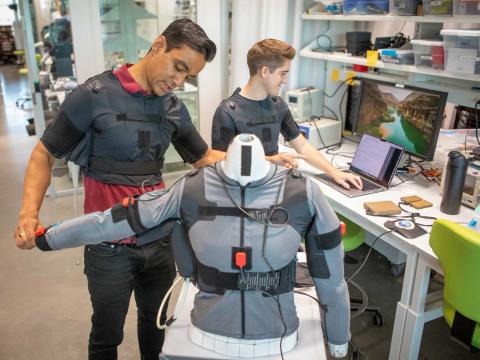The Emerging Layers of a Quantum Software Stack

With physicists advancing the science of quantum computing and the growing number of quantum bits, or Qubits, in a quantum processor, capabilities to complete the quantum software stack are also emerging. It is the “early days” of this industry, with companies and startups creating the first groundbreaking software solutions to support quantum networks, explained Dan Holme, co-founder with Stephen DiAdamo of Qoro Quantum in the United Kingdom.
“It is clear that the physics side of quantum technologies is still coming from the hard-core physicists, but for quantum computing to become a mature technology, and a series of technologies—including sensing, networking, computing—there are a lot of other aspects, which are required to support that,” Holme explains. “Everything from service assurance to documentation, to infrastructure, to software required for managing and controlling, all the different elements are necessary. And a lot of that comes from the traditional information technology (IT) domain.”
It is truly an international marketplace. For example, algorithm companies—such as Finland’s Algorithmiq—are developing quantum algorithms to integrate classical computing with quantum computers. Other companies, such as Australia’s Q–CTRL or the U.S.-based NVIDIA—are offering quantum infrastructure software to, as Q-CTRL puts it, “transform bare-metal quantum processors into useful computational tools” or sensors.
There are also single-node, pulse-level control and error correction companies, such as Keysight or Riverlane. Since quantum computers produce about one error per every 1,000 operations, correction software is necessary to reduce error rates and make quantum computing useful, according to the U.K’s Riverlane.
Then, there are heterogeneous network compilers, such as from Holme’s company, Qoro Quantum, which offers heterogeneous network management and intelligent network control. The technology enables quantum algorithms to scale across heterogeneous computing networks, automating processing pipelines and hardware orchestration.
“Currently, quantum computers do not have any, or have very limited memory, therefore, execution of computation is finite, and the task requires leaning on resources outside the quantum computer to capture the results and reiterate,” explained Holme. “We provide an automated quantum algorithm processing pipeline and a cloud-based network controller that synchronizes multivendor computing clusters for optimal quantum application execution. Our platform enables integration between quantum and classical systems, ensuring efficient resource allocation across a variety of computing clusters, including field programmable gate arrays, graphics processing units, central processing units and quantum processing units (QPUs).”
In their software, Qoro uses standard programming languages, such as Python and C++. “We use C++ for the performance of our more latency-sensitive, high-performance, circuit-cutting and parallelizing engine and that works great for us,” Holme offered.
When it comes to the actual quantum circuits themselves, they rely on the quantum programming language called QASM. The quantum assembly language is one of the industry standards to control circuits and algorithms for execution of the QPU.
“We can receive instructions in QASM format,” he noted. “We can send the circuits to the computers in QASM format—it is an assembly language. But longer term, I think, to become more hardware aware, there needs to be a new series of protocols implemented and standardized to go between the network and the host. And that really just is not there at the moment.”
Holme compares the quantum computing environment to the traditional IT world, with hardware networks and this need for software-defined controllers, the central “brain-like” controller of a large network of individual devices. This is key, especially considering that quantum computing in a monolithic form is struggling with scalability, regardless of the modality.
And naturally, with quantum computing networks, there will be hardware specificity in the computing and endpoints. Also, such a network will have a lot of complexities around error correction and the control of qubits that are hardware-specific. This will require quantum computing hardware-specific elements or connectors in Qoro’s software, Holme acknowledged.
Another needed industry solution is the ability to handle error correction across a whole network.
“If you are using a quantum network—and this is still really up in the air on how these things are going to work—and the network itself is creating errors, then there will need to be new techniques to resolve that because entanglement cannot be treated like traditional optical signals,” he suggested. “This is the cutting edge, where people are looking at error control or error mitigation techniques across the whole network. This would really be part of the process, or the instruction set that is given to the hardware when it comes to configuring the quantum information, which is received at both ends.”
It is a field with lots of emerging aspects to it, and therefore, there is a hotbed of startups coming out of it.
Holme also sees the need for open standards. “Longer term, there will be a need for interoperability between different systems,” he shared.
He acknowledged that the nascent quantum computing industry is both competitive and collaborative. “We are in the early days, and we are still in the stage where everybody’s very willing to work with each other fairly openly,” Holme stated. “But when it comes to the hardcore information of how the computers are working, they are not sharing much. None of the quantum computing companies are really opening up about the telemetry and the different information you could potentially be aware of to then improve the decisions that you make in the network and to improve the overall connectivity or execution of a program.”
But after a 25-year career in managed services, computing and data center expertise, it was the evolution of the quantum computing industry that drew in the traditional network technologist. “It is a field with lots of emerging aspects to it, and therefore, there is a hotbed of startups coming out of it,” Holme said.
A master’s degree in quantum technology from the University of Sussex is helping his career pivot into quantum information technology. “It is trailblazing,” he noted. “It is the first distance learning master’s degree on quantum technology that is being offered in the U.K., and there are people from all over the globe on the course.”
Hosting a podcast helped him gain knowledge of the burgeoning industry—and what capabilities were missing.
“I started a podcast about a year and a half ago, called The Quantum Divide, and I’ve interviewed a lot of interesting people about quantum communications,” Holme shared. “I wouldn’t say I’m the physicist that is configuring and building these systems, but I know enough through all of my interviewing and research to be able to talk about the current state of play.”
With that, Holme saw an opening for a key software solution for the quantum network stack that would enable network scaling. “Our platform that we’re developing at Qoro actually looks at the algorithm you’re running and the computers that are available to all the simulators that are available to it and makes intelligent decisions on how to parallelize,” he stated.
Going forward, his vision is to drive innovation for quantum data center networks.
“Over the next few years, I’ll be working towards the networks of tomorrow,” Holme said. “And for us as a software player, it’s about the complexity needed to control, distribute and schedule the way that entanglement is sent and consumed across the network. In some cases, that will be very hardware-specific, and whether it is two machines just connected point to point, or is it five machines connected in a mesh, or is it a mixture of those? And the knowledge of that will determine how the algorithm is distributed across the network.”





Comments